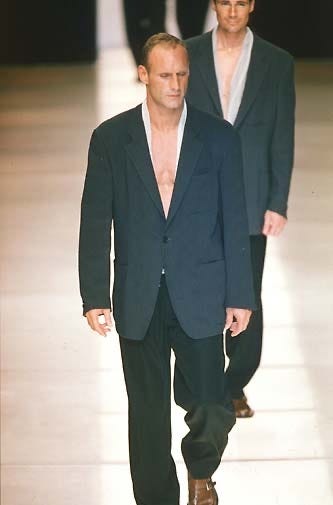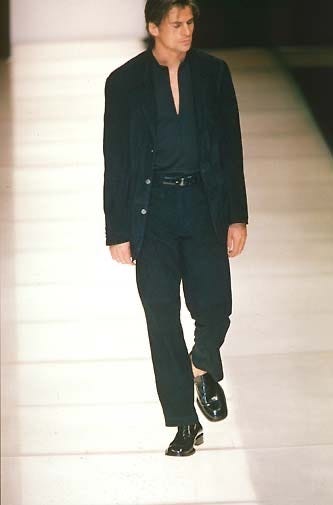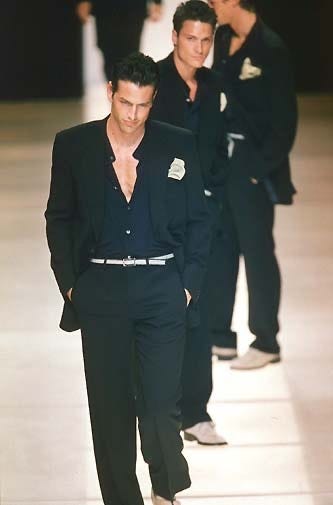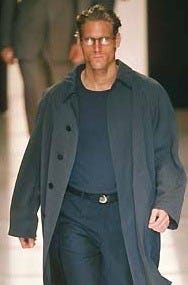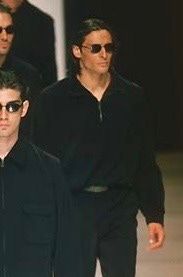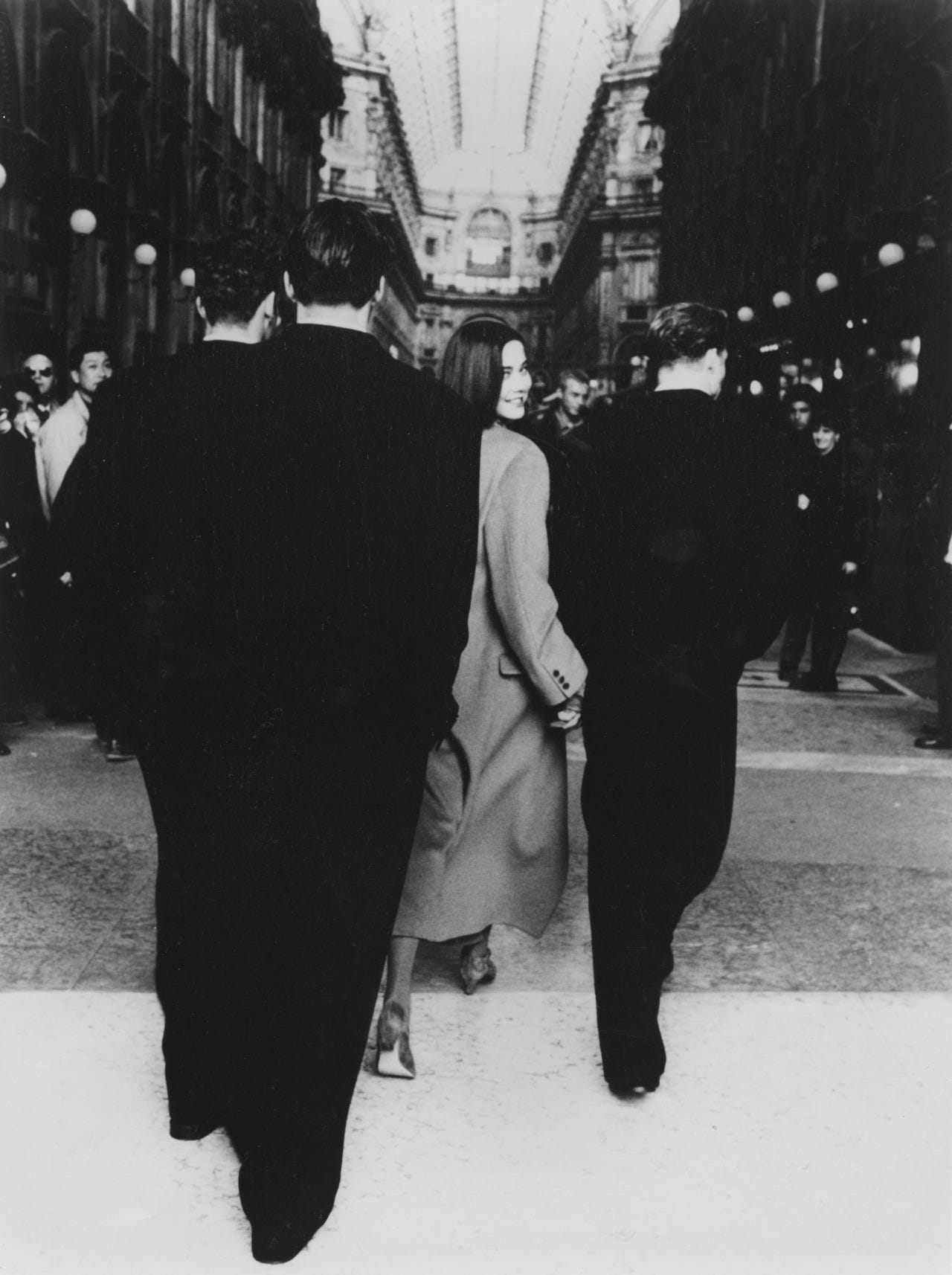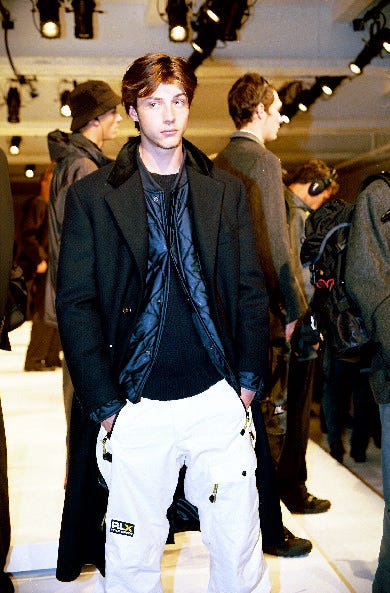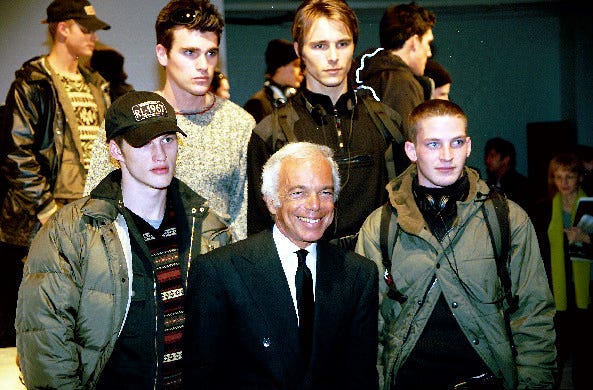The Pillars of HyperMasculinity
A brief overview of yesterday's visual styles of menswear and fashion culture from past and current leaders such as Gianni Versace, Ralph Lauren, Giorgio Armani, Bruce Weber and more.
way back into the 70s one of my favorite eras of style had began a growth of another kind of fashion in the catalogs and runways that became a blossom of fashion that is long dead or perhaps obscured now or maybe more so mutated and transformed, sewed into the tapestry of the larger zeitgeist that is more apparently an amalgamation of options in our current internet era.
Uniforms for men mastered by designers such as Giorgio Armani, Gianni Versace, Gianfranco Ferre and Ralph Lauren came into the fold through the 70s and slowly died off into the 90s and 00s leaving its bits and pieces until there was no more but mere run off.
the designs of these men invoke the memories of crime films by Michael Mann, Hero archetypes of Action films of an Arnold Schwarzenegger or Tony Scott, the poetic architecture fit for a Wim Wenders character and the boy of the hour presentation in design of suits that remind you of the golden age of Saturday Night Live.
They gave a baller image without being loud even it was bright Versace colors.
I put a lot of designs like these in a file on my computer i call “the protagonist”, Containing duality that can be perfectly captured in a video game like Tekken where you’re a business executive who’s also going fist to fist in his high rise. Almost Bruce Wayne esc, almost Michael Corleone, men of formality and youth., the elevated everyman.
Giorgio Armani even took part in the design of a film which was also a dream of Gianni Versace’s. Armani had done the wardrobe of 1980s neo-noir film ‘American Giglio’ that stars Richard Gere as a high priced escort, but that is not even Armani’s best work which primarily was shown in catalogs and in Runway presentations as well as his contemporaries.
Armani and his long time photographer Aldo Fallai are well aware of the imagery they’ve painted in their work.


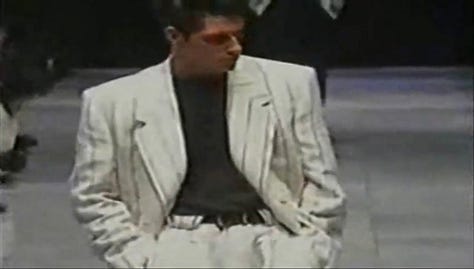
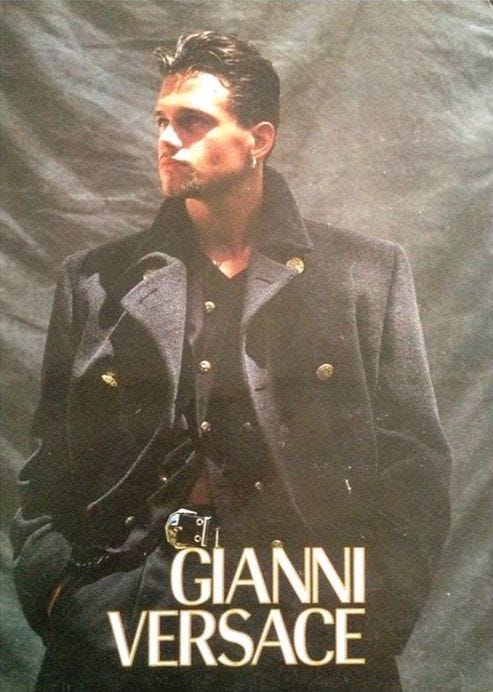

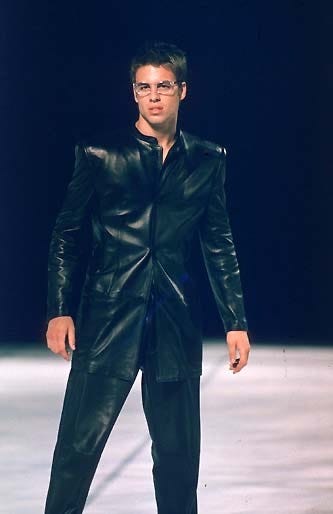
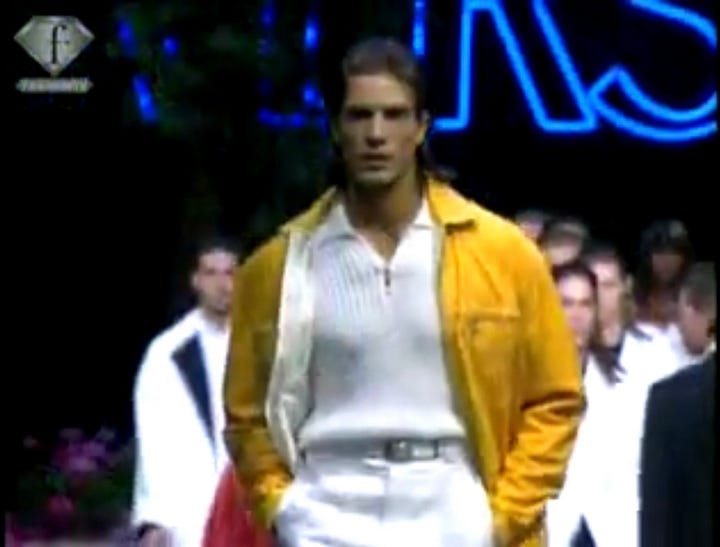
“The portrait of a non-existing Italian bourgeoisie”, Fallai would describe their aesthetic as in a 2014 system magazine and he goes on to say “If you watch Fellini’s I Vitelloni, you can see where the Armani style comes from.” both of these factor into the environment they were in of 1970s Italy where these figures didn’t exist around them, it was a rebellious time, where the youth were considered terrorist and the streets were dangerous. In a 1994 TV interview with Gianni Versace Charlie Rose says that Gianni Versace’s menswear inspired the look of the 1984 show Miami Vice produced by Michael Mann, that was later adapted into a film in 2006 directed by said producer.
The designs of this era contain an essence i would imagine Christopher Nolan dreams of extracting and putting into his films considering he’s a old school Bond fan and the electronic soundtracks, the collections of the 80s and 90s are usually set to makes this fictional capcom-esc fantasy all too real.
A common ingredient in these kinds of designers is the perspective of Luxury and Quality but also to be Cool. Gianni Versace considered himself “Classic” and maybe by today’s standards a bit more conservative compared to how fashion is always moving and cutting edge.
Ralph Lauren who started on menswear in 1967 by making ties in New Tork, in a 1990 archival interview from FIT says that his main inspirations from his youth he noticed were “a strong movie influence” and "a strong athletic influence.” The latter being synonymous with his infamous prep aesthetic.
Ralph Lauren early in his was able to provide wardrobe for the 1977 film ‘Annie Hall’.
Giorgio Armani who grew up in the 40s and 50s as well was often inspired by the Hollywood men of his youth like Cary Grant of 1959s ‘North by Northwest’ and 1955s ‘To Catch a Thief’ who Grant himself was sought after to potentially play the James Bond role.
Armani in an 2021 interview with GQ’s Alexander Fury has said Grant had “that masculine way to be nonchalantly elegant that was completely effortless.”
Armani is worth singling out the most among the mount Rushmore of hyper-masculine focused designers for the fact that his mens runway presentations are still going in 2023, which gives him the stance of being the biggest example of the Hyper masculine style and in that time he came up with a color called ‘greige’ that comes across across as a brutalist grey under a Italian style sepia filter which perfectly incapsulates an poetic ideal you would imagine of his designs, especially when looking at his span of visual work with photographer Aldo Fallai from 1975-2013.
Another contributor to the spectacle of man in photography is a fallen from grace visual artist who has long since been deemed understatingly problematic, Bruce Weber.
When Gianni Versace was alive Bruce Weber was Versace’s go to, like Armani and Fallai and he also had done work for Ralph Lauren as well.
Weber had done a number of great images and catalogs for Versace, Abercrombie & Fitch, L’uomo Vogue and his own films like Chop Suey (2001).
Weber seemingly captured the aesthetically pleasing boyishness of Men that fits in perfectly with this era of designers, but ultimately his work is now a tainted, sad and conflicting spectacle due to being described as “a serial sexual predator” by his victims of sexual assault.
The visual aspect of this era of menswear, obviously just as important in creating the language was in time carried by L’uomo Vogue that hosted the still imagery of photographers like Steven Klien, Michael Comte and Weber.
Aldo Fallai in Armani catalogs would reference renaissance paintings, where the figure is the central element and the model would often look directly into the camera, a similar style to Michael Comte.
Klien and Weber on the other hand had images that were stylized versions of ‘slice of life’ or ‘modern man’ like images.
Notable publications like Popeye magazine adopted a similar approach to the latter in their editorials, showing boys in transit or in leisurely like states opposed to studio settings.
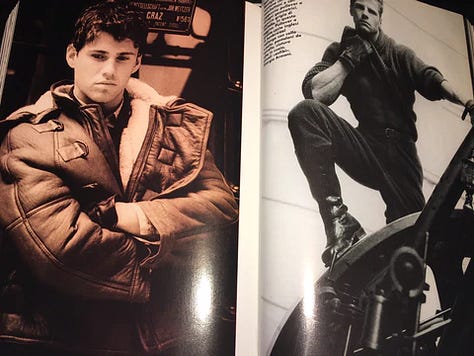
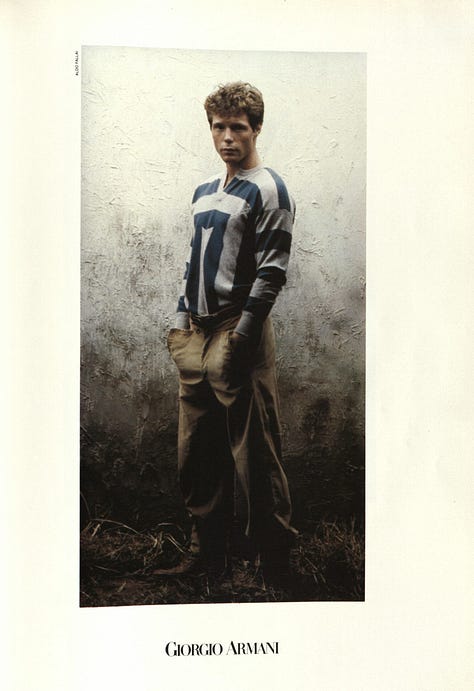
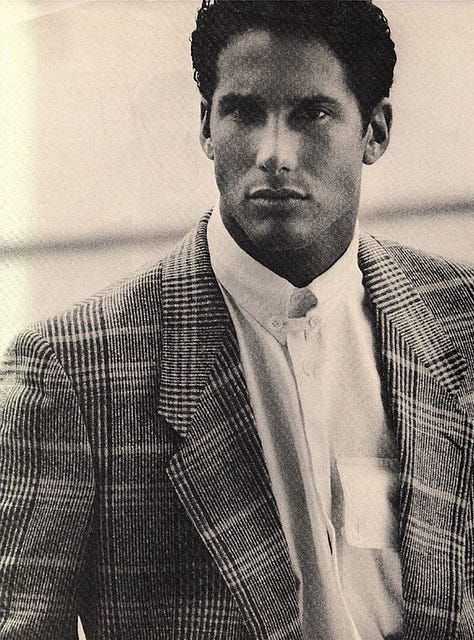


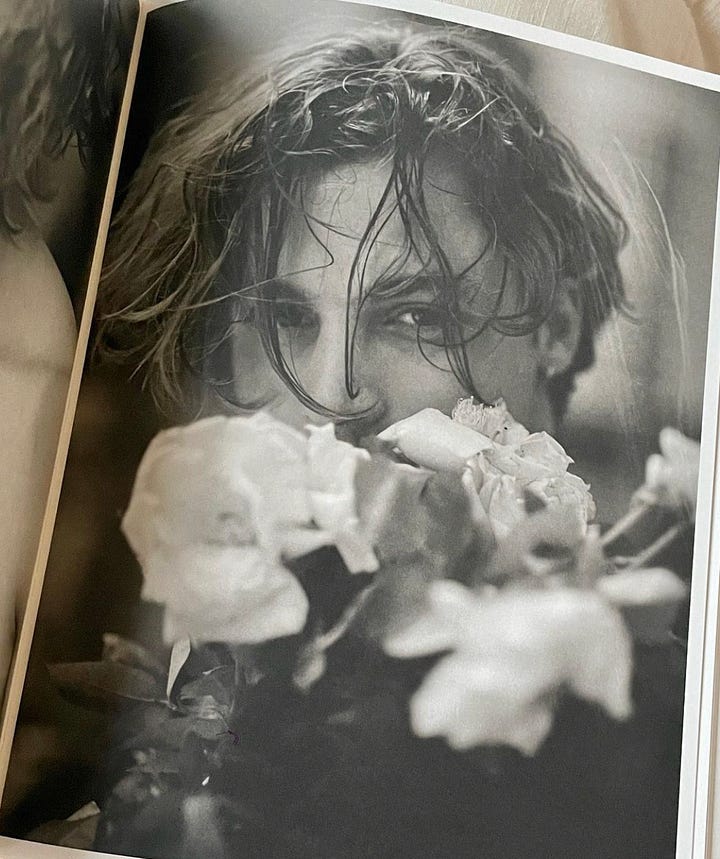
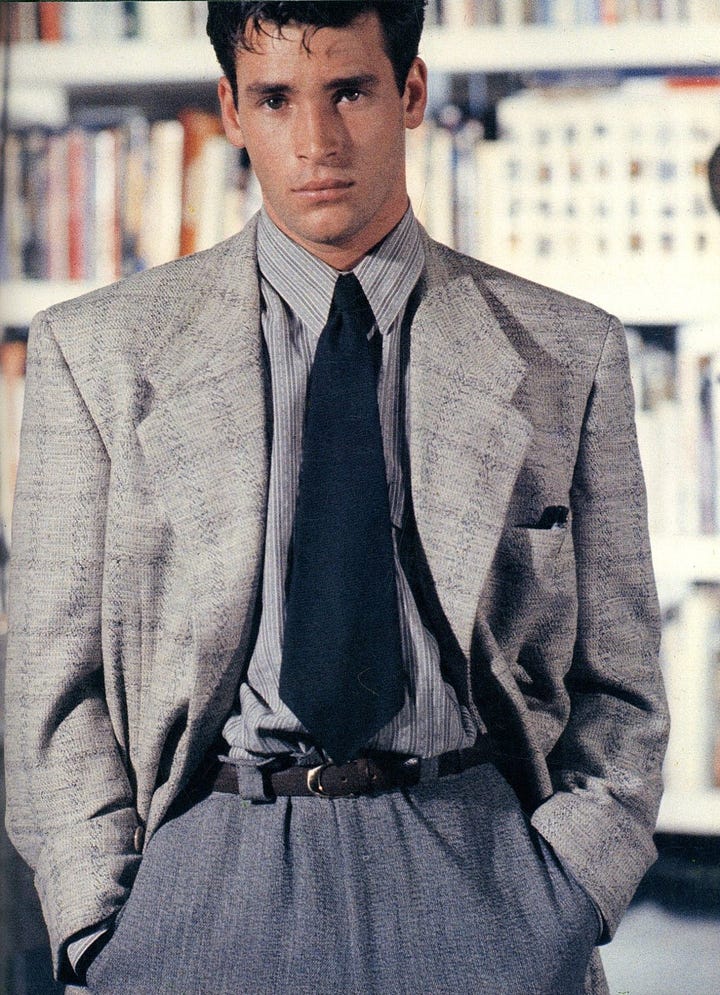


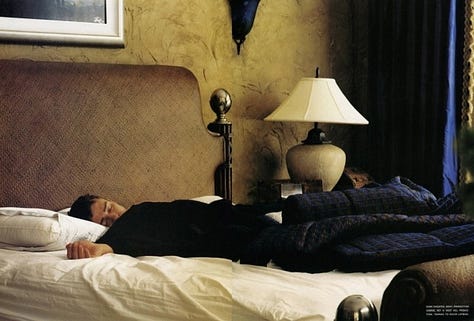

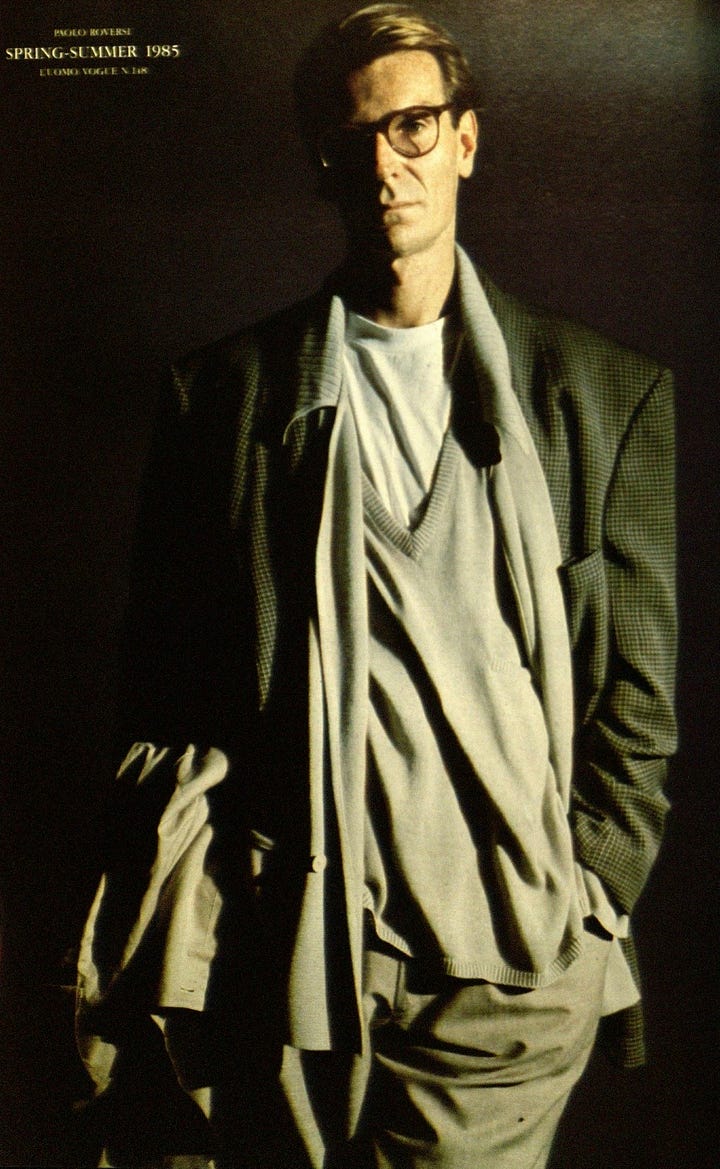
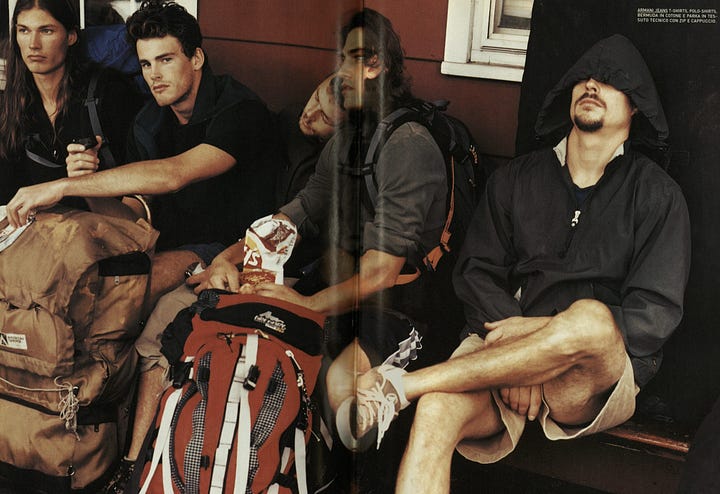

There is an ultimate power in the bulk of the clothes designed through these time periods by the men mentioned. A lot of the greatness designed through this time of subtleties the padded shoulders. “Giorgio developed the men’s waistline, which is something nobody was doing before. The waistline became wider by going higher. He revisited – and made fashionable again – the shape designed by Yves Saint Laurent.” Aldo Fallai said about Giorgio Armani in 2014 interview with Giusi Ferrè of System magazine.
Fallai also say “it was a precise style of dressing, of living in a specific house, of going to a particular hotel”. The quality and detail, the air was different and these designs presented the wardrobe of killers, the common man but a man with refined styled, a cultivated understanding.
It is a shame these styles haven’t been resurged into the modern day and streamlined by anyone again, given some small updates like how ultra skinny came to be by the hands of Heidi Slimane.
In the midst of the endless amount of costumes resurged, the hyper-masculine style has failed to have proper dedication that doesn’t feel like a cosplay, a satirical joke or clownification, since its hay day.
I believe the now old “modern man” designed clothing that was once displayed on square jawed athletic muscle types, still has plenty of life as it’s influenced our cultural habits as vein as they may be and always should have a space in a fashion landscape that now doesn’t adhere to too many trends but engulfs all that was, is and will be.
In the very least i hope this can shine a light on past menswear and also some of the noteworthy contributions from some Italian stalwarts.
